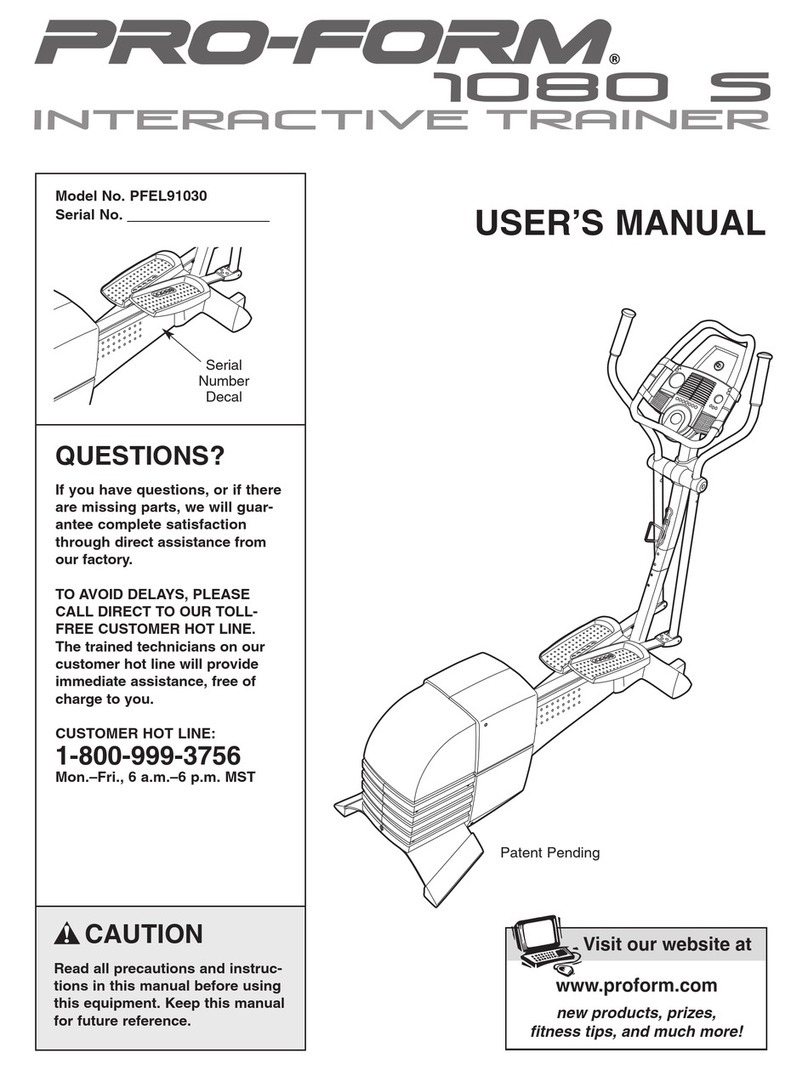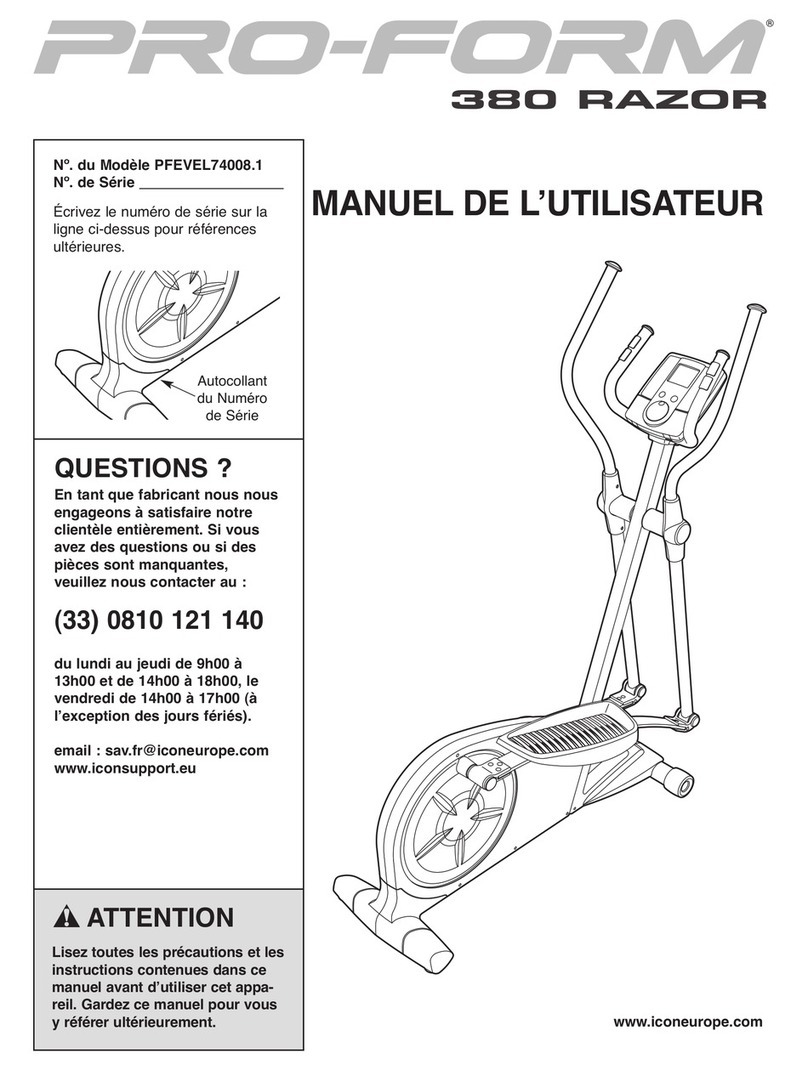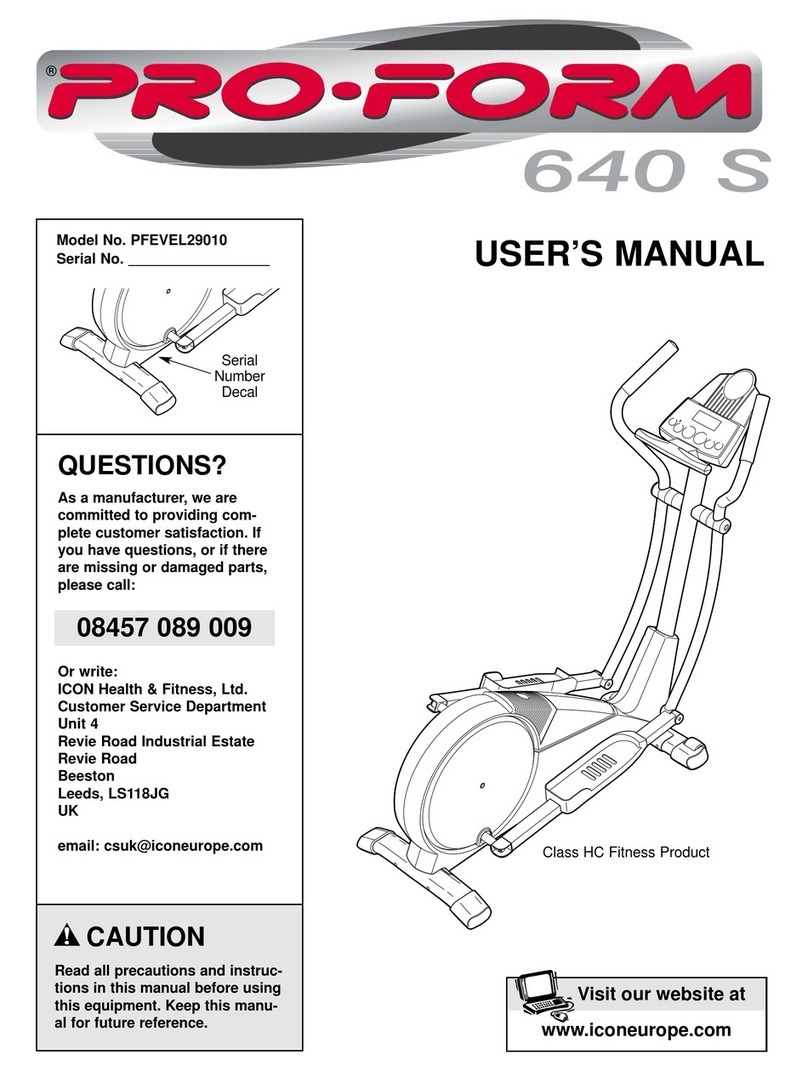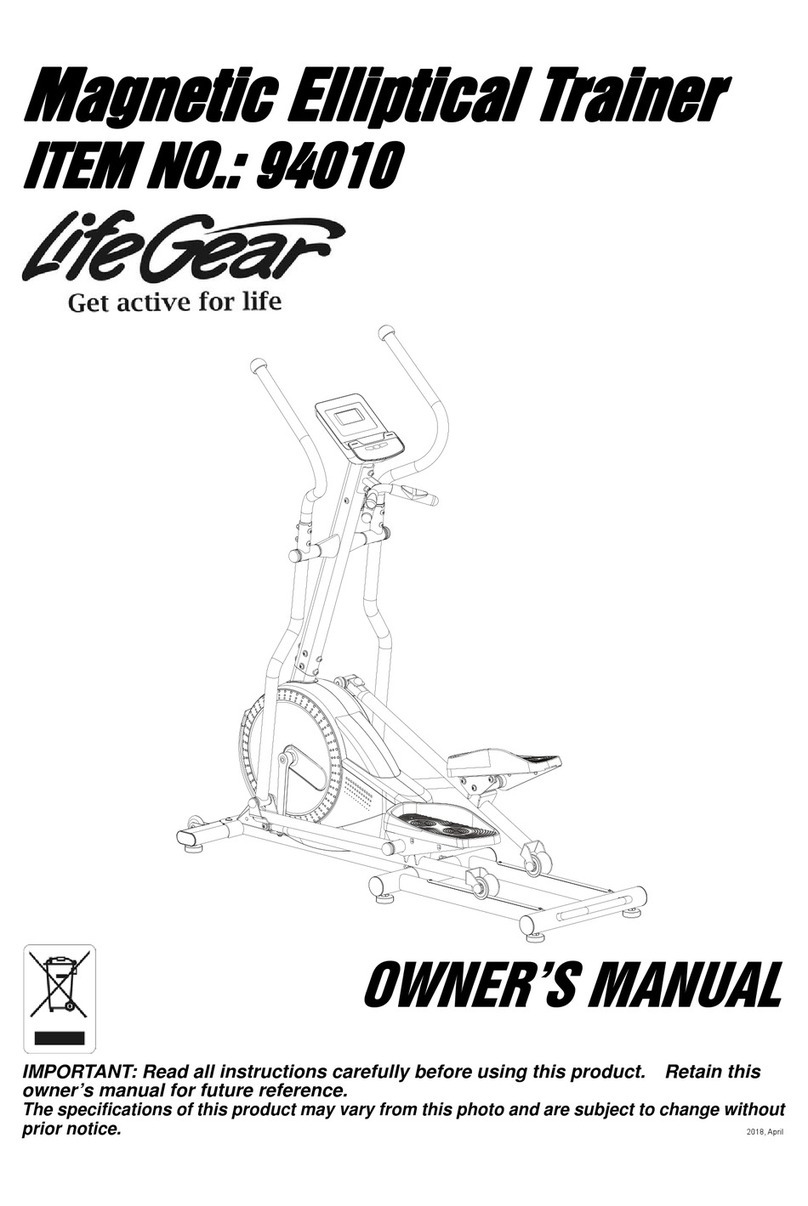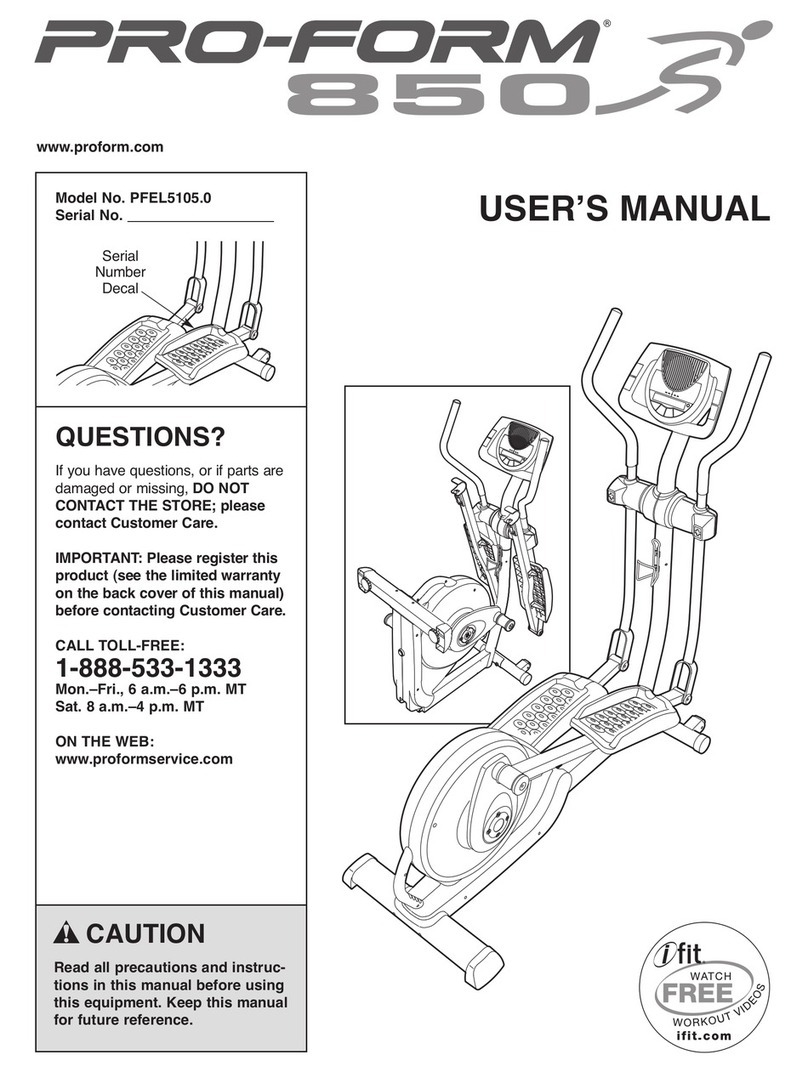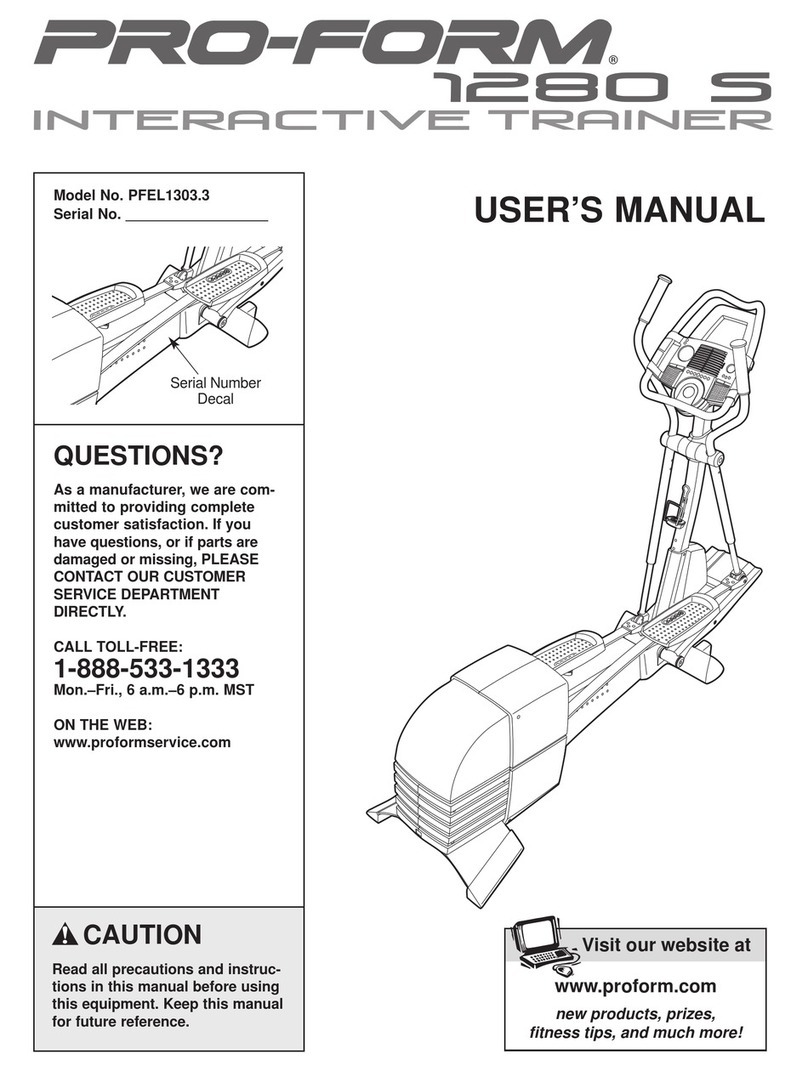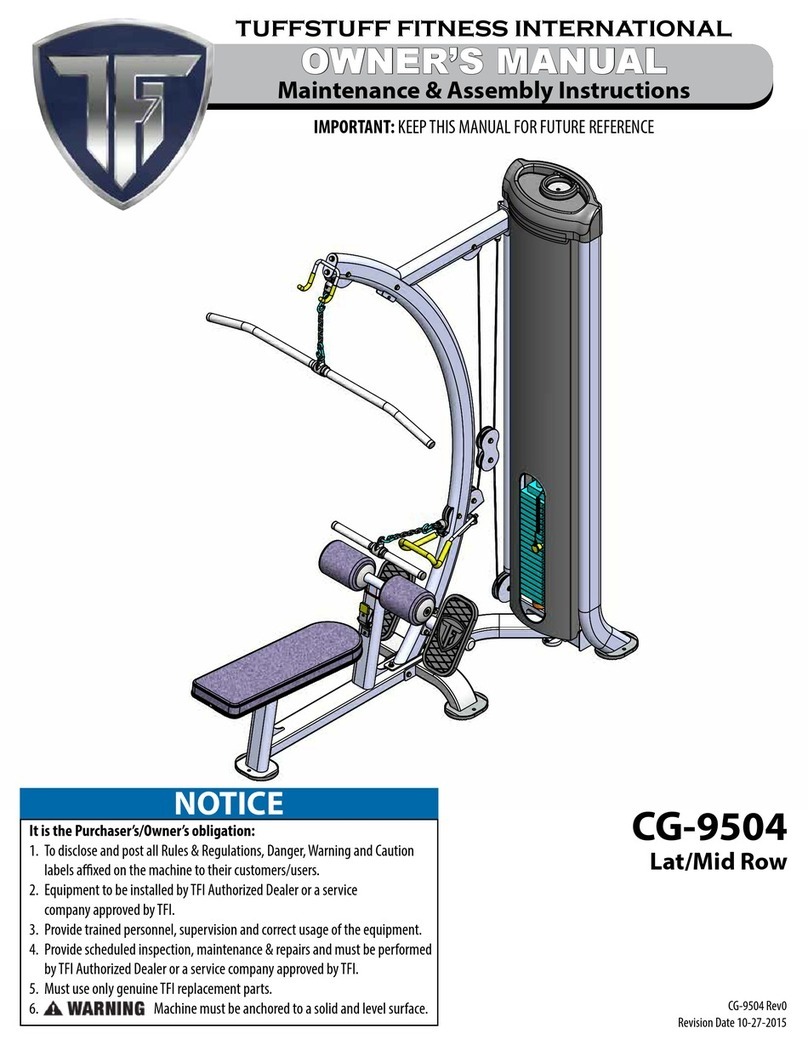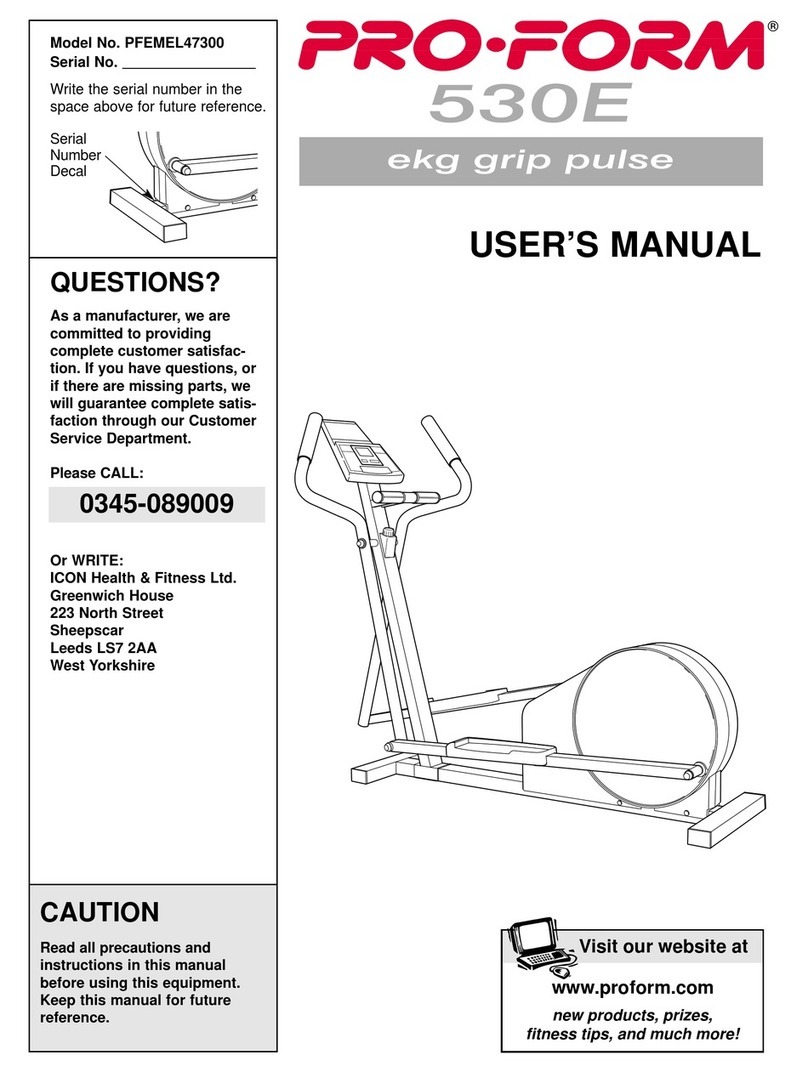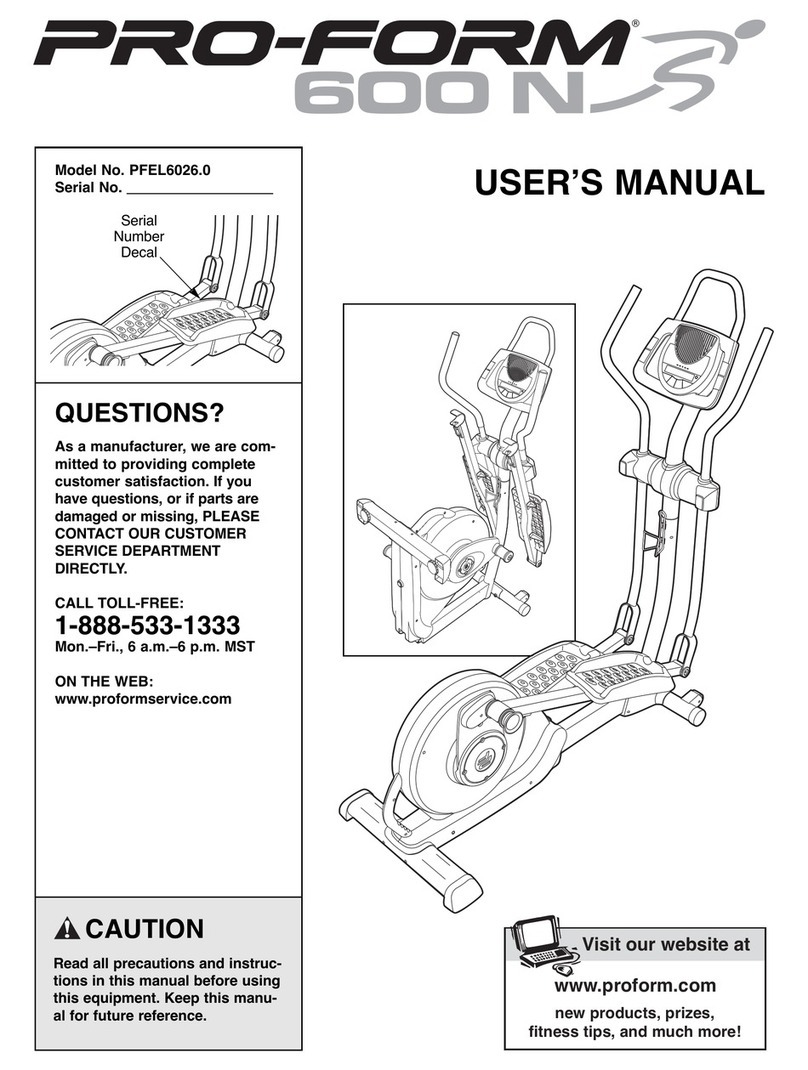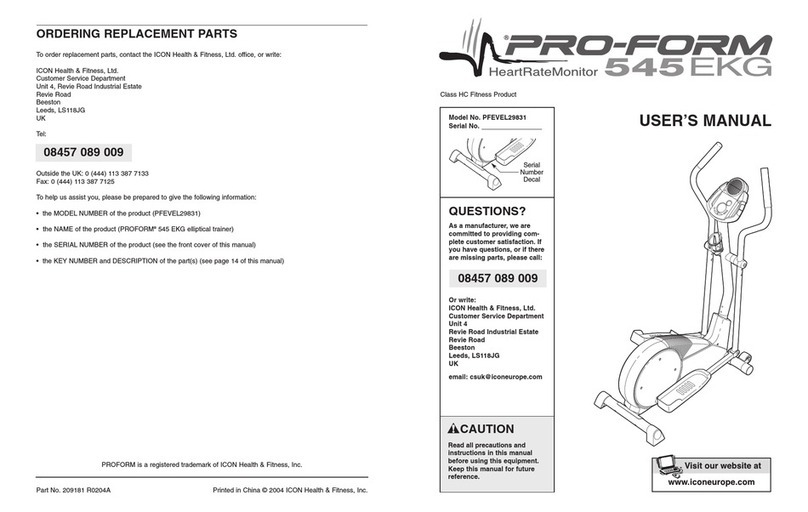Daum electronic ergo_lyps User manual

User Manual

2
Preface
- Introduction................................................................................................. 2
- Keywords Glossary / Info Texts ................................................................. 2
- Data Interface ............................................................................................ 2
Safety Notes
- Notes About Personal Safety ..................................................................... 3
- Compliance to Standards .......................................................................... 3
- Mains Voltage 230 Volt .............................................................................. 3
- Used Symbols ............................................................................................ 3
- Accessories ........................................................................................... 3 - 4
Training Conditions........................................................................................ 4
Setting Up
- Control Elements and Connections............................................................ 5
- Transport and packaging............................................................................ 6
- Assembly Notes.......................................................................................... 6
- Assembling the device................................................................................ 6
- Lock button ................................................................................................. 7
- Unfolding / Folding...................................................................................... 7
- Switching On / Off....................................................................................... 8
- U shaped Handle........................................................................................ 8
- Notes about Heart Pulse Rate Measurement ............................................ 9
The Dashboard
- Top part – overview of the commands and function elements ................. 10
- Bottom part - overview of the connections ............................................... 10
Dashboard User Guide
- Switching On ............................................................................................ 11
- Demo mode ............................................................................................. 11
- Starting Training Without Selecting a Program ....................................... 11
- Setting Personal Data............................................................................... 11
- Starting Training by Selecting a Program................................................. 12
- Training Programs .................................................................................... 12
- Setting Limit Values............................................................................. 13-14
- Reviewing Stored Training Data............................................................... 14
- Fitness Test and Fitness Mark ................................................................. 15
- Relax Function ......................................................................................... 16
- Premium programs ............................................................................. 16-17
- Premium Coaching ............................................................................. 18-23
- Online Training ........................................................................................ 24
- Group training / network races ............................................................ 25-26
- System Software Update Using the Card................................................. 27
- Keywords Glossary................................................................................... 27
- MP3 player .............................................................................................. 28
- TeamAward ............................................................................................. 29
EC - declaration of conformity ..................................................................... 30
Specications .............................................................................................. 31
Maintenance
- Liability...................................................................................................... 31
- Fastening Screws ..................................................................................... 31
- Replacement of the Dashboard Battery ................................................... 31
- Noises....................................................................................................... 31
- Surface Cleaning ...................................................................................... 31
- Replacing the V-belt ................................................................................. 32
- Troubleshooting........................................................................................ 32
Tables and Diagrams
- Table of Target Heart Rate Zones/ Aerobic Zone .................................... 33
- Overview Diagram of the Target Heart Rate ............................................ 33
- Speed Power Diagram ............................................................................. 34
Accessories
- ergo_memo-card2 ................................................................................... 34
- Ear Clip..................................................................................................... 34
- Relax sensor ............................................................................................ 34
- Bluetooth Adapter .................................................................................... 35
- ergo_slim card ......................................................................................... 35
- Floor Protection Mat ................................................................................. 35
- Cardio Sensor Chest Belt......................................................................... 35
Optional Software
- ergo_win premium pro ............................................................................. 36
- ergo_win race edition .............................................................................. 36
- ergo_memo-card2 Editor ......................................................................... 36
- Premium Program Editor ......................................................................... 36
Congurations ....................................................................................... 37-40
Warranty conditions..................................................................................... 41
GNU General Public License ............................................................... 42 - 43
This ergometer is specially designed for health and endurance training. High
quality manufacturing, an easy to read dashboard, and ease of use and of
maintenance contribute to make this appliance an ideal training device for
sport and tness training. We would also stress that the complete equipment
list and the convincing performance range appeal to athletes and tness con-
scious persons of every age group.
Introduction
Designed and manufactured in conformity with the DIN EN 957 1/-9 Class
SA/HA standard, the ergo_lyps is more than a home trainer. It is suited for
sportive and therapeutic utilisation at home.
An important aspect, and therefore an identifying feature, of an ergometer is
the fact that the required pedalling resistance in watt can be prescribed. This
pedalling resistance will be maintained irrespective of the pedalling speed.
The advantage being that the user cannot unknowingly be subjected to a
wrong load (see diagram on page 38).
At the heart of the ergo_lyps is the full electronically controlled, maintenance
free, eddy current brake, which adjusts the braking load to t the user’s perso-
nal requirements based on the computed data, and which allows a continuous
load setting from 20 to 600 Watt.
Keywords Glossary / Info Texts
Please refer to the information concerning each operation status stored in the
dashboard. Use the Info-key to display this information.
The keywords glossary provides additional information and explanations.
The keywords glossary and the info-texts are an essential part of this
user manual!
Data Interface
You can use a personal computer (PC) to control the ergo_lyps premium88.
A special data cable is needed to this effect, which you can order from daum
electronics gmbh.
Table of contents
Preface

3
D
!
Notes About Personal Safety
The ergo_lyps ergometer is intended for adults. Children
should only be allowed to train with the ergometer under
adult supervision.
PPersons suffering from any of the following diseases should consult their
family physician or a specialist before starting training with the ergo_lyps.
- Heart disorders like angina pectoris, coronary thrombosis (infarct), stenosis,
and high blood pressure
- Diabetes
- Respiratory disorders like asthma, chronic bronchitis, etc.
- Rheumatism
- Gout
- Or any other disease or illness
You should never train when you feel ill or weak.
Persons who are not used to exercise must start with an easy training pro-
gram, and then increase the load intensity very gradually. Persons with de-
clared health problems must evaluate their personal risks with the help of their
family physician.
You should never use the ergo_lyps to nd out your maximum physi-
cal load capacity. This can have serious consequences on your health
Please read the user manual carefully before starting to use the training de-
vice.
The user manual should be kept in the direct vicinity of the ergo_lyps premi-
um88. It is an integral component of the device.
The manufacturer will not be held liable if the ergometer is not used in compli-
ance with the provided instructions and consequently causes injury to persons
or other severe consequences, as well as material damages.
daum electronic gmbh considers itself to be liable for the safety, reliability and
functionality of the device only if:
- the device is used in compliance with the instructions of the user manual.
The device is not protected against the inltration of liquids.
Direct contact with humidity or liquids must absolutely be avoided.
Care must be taken to wipe out sweat drops after training (sweat attacks paint
and plastic parts).
Damages caused by sweat are not covered by the warranty.
Cellular telephones may not be used in the direct vicinity of the device, other-
wise they may interfere with its functionality.
When interconnecting many devices care must be taken to avoid any danger
arising from the summation of the leakage currents and to ensure the potential
equalisation is effected through a common current (power) supply (e.g. a wall
socket-outlet). If you have any questions please ask your dealer or the service
department of daum electronic gmbh.
If a socket with multiple outlets is installed after the initial start-up, no other
device may be connected to this socket. (use covers on the multiple sockets)
Only cables certied by daum electronic gmbh may be used to connect the
device with other devices.
A electrical shock hazard exists when touching devices that are not separately
grounded.
Defective or faulty devices and accessories may not be used.
The personal computer and all other connected devices (e.g. monitor, printer,
etc) must be installed at least 1.5m away from the training place, because lea-
kage currents could be generated on the housing (or use separate grounding,
housing leakage current).
Electromagnetic interferences are primarily characterised by the oscillation
of the displayed load value. If the displayed value varies uncontrollably, even
when the speed is higher than 30 RPM, this can be an effect of electromagne-
tic compatibility (EMC).
Ergometers are not suited for operation in rooms and / or areas with explosion
risks or in a combustive atmosphere. The devices may not be operated in
the near vicinity of e.g. motors or transformers with big electrical connections
because electric or magnetic elds may disturb or deactivate some functions.
The vicinity of high voltage cables is also to be avoided.
Unless otherwise specied in the accompanying documentation and delivery
documents, all the devices are designed to be used in the usual closed condi-
tions under the climate conditions considered normal:
Temperature range:+ 10° to +40° C
The devices must therefore be protected against particular humidity effects.
Ventilation opening must not be covered in order to avoid restricting the circu-
lation of air. Storage temperature range: -20°C to +50°C.
All the devices may be stored for a maximum period of 6 to 9 months without
being connected to an electrical power supply. Beyond this period the rechar-
geable batteries may loose their charge as a consequence of the lack of elec-
trical power supply. If the storage period of the device exceeds this period, it
will eventually need to be reprogrammed.
Compliance to Standards
The ergometer may not be used if the certications/approval and the dened
safety standards do not comply with the local prescriptions. The local country
specications must be compared with those of the device before using the
device and the device may only be used if they comply with each other.
Mains Voltage 230 Volt
Because of new regulations the mains voltage must be specied in the form
of a denite value. Consequently, the mains voltage values indicated with a
tolerance from 220 to 240 Volt will be restricted for all the ergometers of daum
electronic to the single mains voltage value of 230 Volt.
Mains Power Supply
In order to avoid all hazards any damages to the connection cable, to the
mains power supply or to the On/Off switch must immediately be repaired, or
replaced with new parts, by the manufacturer, the customer service depart-
ment of the manufacturer, or similarly qualied service personnel
Used Symbols
The symbols used on the ergo_lyps premium88 comply with the IEC 417 and
IEC 878 standards (table D1/D2).
Follow the Warnings / Danger Notices
Accompanying documents / instructions.
Device of type B
Dangerous electrical voltage
Alternating current
Protective cable connection
Ground
Refuse bin for electrical and electronic devices
Read the user manual
Accessories
The documentation supplied is an integral part of the ergo_lyps premium88
and may only be copied or distributed with the authorisation of daum electro-
nic gmbh. The device may only be used with the accessories prescribed and
distributed by daum electronic gmbh.
Every accessory item and every device connected must be manufactured in
conformity with the corresponding applicable standard.
The ergo-bike premium88 may only be used with the internal and external
software supplied and authorised by daum electronic gmbh.
!
Safety Notes

4
The supplied software may only be copied and archived for safety and functio-
nal reasons. In special cases a request must be addressed in writing to daum
electronic gmbh. Releasing it to non-authorised persons in not allowed.
Note!
You will nd more information about training for sport and health in the pocket
book “Training with the bike ergometer” Improvement of health and tness as
training target with the ergo_lyps (in German).
Order from: daum electronic gmbh
Flugplatzstr. 100
D-90768 Fürth
Fax ++49(0)911/753714
You should pay attention to providing good training conditions; this includes
choosing the training room and installation place. Makeshift installation
places do not incite to training!
The ergo_lyps makes it possible to dene and control the exercise sequence
yourself. It is thus possible to continually adapt the training plan to the capa-
cities of the user. This device is suitable for therapeutic use.
It does not meet the requirements for medical and diagnostic usage (in
medical clinics).
Ergometers are designed for endurance, agility, and physical condition trai-
ning, as well as for strengthening the cardiovascular system and increasing
the muscle mass. The inclusion of the pulse rate in the parameters used to
control the load enables training in the efcient aerobic zone.
Being in the aerobic zone means the muscles’ loading is at the exact level
where they can be adequately supplied with oxygen without overproduction
of lactic acid (muscles’ ache). Therefore, the ergometer bike is also a great
value for sports medicine and physical education.
The fact that the training effort can be nely measured gives you the possibi-
lity to carry out physical stress tests to get information on your physical con-
dition. You can thus identify early any cardiovascular problems and, with the
help of a physician, set up a special endurance training-plan to deal with them.
A relaxed body posture is essential for the efciency and the benet of the
training with the ergo_lyps. You should not be tensed up while training. You
should wear loose training garments so that you don’t get into sweat too
easily and are not constricted by the clothes.
You should only train with sport shoes. These should not have a very hard or
smooth (slippery) sole. We recommend a non slippery sole that is relatively
soft and well structured. This type of shoe will give you a good stability on the
coarse structure of the step plates, which must be maintained for your own
security
.
Training Hints
Generally speaking, training twice a week will help retain your physical con-
dition level. To improve your tness level you must train at least three or four
times per week.
You should consult a physician before increasing the number of weekly trai-
ning units, to avoid overloading yourself.
Safety Notes
Training Conditions

5
D
Control Elements and Connections
1 Dashboard
2 safety handle / U shaped handle
3 safety handle / Oscillating pole
4 toggle screw for the dashboard hinge
5 Oscillating pole
6 Cover
7 Cover cap
8 Lock button
9 shaft cover
10 power switch
11 hinge cover
12 name plate
13 Stand foot with roller casters
2
15
13
12
10
1
3
24
23
21
19
17
18
22
8
20
14
3
4
5
5
25
14 control rod
15 Stand foot with height adjustment
16 releasing lever
17 Height adjustment
18 Guide rails
19 Lock button with safety lock
20 Roller caster with protection
21 Foot rods
22 Step plates
23 Drinking bottle
24 clamp screw for the handle
25 interfaces for connection
16
18
25
4
10
12
6
7
11
9
Setting Up
35
150
KG
daum electronic GmbH
D-90768 Fürth
ergo-lyps premium88
230V
~
50Hz 65W
123456789101112
200
SN
PLY
Made in Germany
z
1011

6
2
3
1
Assembly Notes
The ergometer should be installed on a level and solid ground (e.g. a
concrete oor). For other oor types we recommend installing and using
the device on a protective base. Appropriate oor protection bases can
be ordered from daum electronic gmbh. Order No. 0810402.
The manufacturer will not be held liable for any damage done to the
oor.
DThe training device should be installed on a level ground and clean. The
device must have a horizontal stand and be stable. The feet must be adjusted
to provide these conditions and must all have contact with the oor.
It is not intended for use in rooms with damp conditions. This could cause rust
to build up on the ergo_lyps, which would damage device parts and impair
both the operating functions and the safety features.
The load carrying capacity of the oor must amount to at least 600 kg / sq.m.
if in doubt consult a structure analyst/engineer.
The device may only be connected to a power outlet (see connections) and
used when all the conditions above are satised.
The ergo_lyps functions with a mains voltage of 230 Volt, 50 Hz and has a
power consumption of 65 Watt. The power supply you wish to use must satisfy
these requirements!
Please make sure the power cord is unplugged before pro-
ceeding with the assembly/installation!
Transport and packaging
The manufacturer and dealer will not be held liable for any
transport damage and for missing parts.
Please take the time to carefully inspect the package and
its content upon delivery of the device. Any claim referring
to transport damages will only be accepted by the transport
insurance if they are immediately recorded in writing on the
delivery documents of the freight forwarder.
Please contact daum electronic gmbh for any open claims.
Daum training devices are generally shipped with a freight forwarding com-
pany. Daum electronic gmbh is member of the “Green Dot” organisation for
recycling purposes: Der grüne Punkt - Duales System Deutschland GmbH.
Please unpack the device as described in the user manual. Verify that the
device and accessories are not damaged, that the small parts are not missing
and that the connection cables are not damaged.
Please dispose of all packaging material in a safe way. Keep all foil and plastic
bags away from children - suffocation risk.
If in doubt, ask another person to help you with the installation.
Heavy devices may only transported by authorised person-
nel and in compliance with the applicable safety directives.
Otherwise the situation may be dangerous for the person or
the machine.
!
!
!
Assembling the device
Release the cable retainer. Remove 4 wooden pads.
Open the package.
Remove / pull the device carefully.
Setting Up

7
D
Fig. 3 Fig. 4
Fig. 1 Fig. 2
Unfolding
Two air (pneumatic) springs are used to support the folding operation.
This makes folding and unfolding signicantly easier.
- Press the release lever with the foot (Fig. 3)
(the engaged folding mechanism is then released)
- Unfold the ergo_lyps slowly
- Insert the guide rail (g. 4):
Loosen the spring mounted toggle button by turning it 1 to 2 turns und pull it
up. Push the released guiding rail inside while releasing the button until the
red safety pin engages (latches).
- Tighten the toggle button back.
- Release lock button
Pull the lock button and turn it 90° clockwise until it latches (remains in the
pulled position)
Folding the device
- Lock button is engaged
Turn the lock button 90° clockwise. It will then engage (latch) when the
oscillating rods are moved and the eccentric plate engages (the ergo_lyps
is now ready to be folded).
- pull out the guiding rail (Fig. 4):
Loosen the spring mounted toggle button by turning it 1 to 2 turns und then
pull it up. Pull the released guiding rail out while releasing the toggle button
until the red safety pin engages (latches).
- Tighten the toggle button back.
- Fold the ergo_lyps slowly until the release lever engages.
(Fig. 3)
toggle button
with safety pin
Release lever guiding rail
Lock button
The lock button is a safety latch.
It is used to lock and unlock the foot plates and their mechanism.
It allows to safely fold the device and prevent it unauthorised use!
Unlocking the lock button (Fig. 1):
Pull the lock button and turn it 90° clockwise until it latches (remains in the
pulled position)
The foot plates are now free to move.
Locking the lock button (Fig. 2): Turn the lock button 90° clockwise. It will then
engage (latch) when the oscillating rods are moved and the eccentric plate
engages.
The foot plates are now blocked.
Safety lock against unauthorised use!
Safety lock for safe folding of the device!
Setting Up

8
ergo_memo-card2
protec-
tion
On/Off switch
360° continuous
1
Switching On / Off
Please read the safety notes before switching the ergo_lyps premium88 on.
Insert the ergo_memo-card2 in the dashboard before switching the device
on.
Use the On/Off switch „O / I“ on the lower front section of the device to switch
it on and off.
When switched on, the system takes about 1 minute to load the software. The
colour screen displays during this time a software load progress bar.
Wait for the beep signal before using the dashboard.
If the memory card is inserted after the device is switched on then you must
wait for the beep signal.
This can take about 5 seconds. (if the card is empty it will be initialised).
In principle the memory card should be pulled out while you are not pedalling
or only after the beep signal!
The protection slider on the ergo_memo-card2 must point to the bottom when
the card is inserted into the dashboard. This will make it possible to write to
the card. If the slider points upward the card is locked/write protected.
Only then can you use a computer to save e.g. mp3 les (in the \mp3 folder)
or update les (in the \update folder) on the card. The maximum allowable
card size is 1GByte.
Points to consider while manipulating memory cards?
1. The electronic components can be damaged by electrostatic discharges.
Therefore you should eliminate (discharge) any potential electrostatic
charge of your body before manipulating a memory card. You can do this
by touching a grounded metal object (e.g. heating system, water piping).
2. Avoid touching the exposed contact pins of the memory card.
3. The memory card should not be exposed to heat, direct sun shine and
humidity.
4. Do not bend, twist or drop the memory card.
5. In order to avoid data loss and / or damage to the memory card you
should NEVER remove the card from the used device during the transfer
of data. Do NEVER pull the card from the device while data are being
written, e.g. during a training session or while a user is pedalling.
6. Make backups on a PC of the data stored on the card at regular intervals
.
U shaped Handle
Loosen the star knob 1, adjust the U shaped handle and the dashboard to
the required position and tighten the star knob back.
Be careful while adjusting the handle to avoid cutting the cables
Setting Up

9
D
Cardio Sensor Belt
correctly put on
Ear clip
Cardio Sensor Belt
Notes about Heart Pulse Rate Measurement
Ear Pulse Rate Measure
Every heart pulse modulates the light passing through the lobe, and can thus
be detected by an infrared sensor in the ear clip, and displayed as heart pulse
rate.
Please make sure that the ear clip is correctly put on:
1. Insert the connector into the Cardio socket.
2. You should rub the ear lobe to stimulate blood circulation.
3. Attach the ear clip to the ear lobe (the closes possible to the head). The
contact surfaces must sit entirely on the skin.
4. After the training clean the ear clip with a soft cloth and 5% soap-
suds.
The scattering in the display of the pulse rate variability is larger than with the
wireless pulse measure (factor 2).
Note: Strong light sources, like sunlight, halogen projectors, and neon
lamps, and also ear piercing or ear rings, or the intake of beta-blocker.
Wireless heart rate measure - Cardio Sensor Belt
The Cardio sensor chest belt transmits the pulse rate directly to the integrated
wireless Cardio pulse receiver in the device. This pulse measurement method
is the most precise.
Note: Your pulse rate will be correctly evaluated over the whole measu-
ring range only if you use a non-coded wireless pulse rate transmitter.
To ensure the maximum efciency of the Cardio sensor belt, you should lightly
humidify the contact surfaces (inner side) of the chest strap before starting
the training.
Note: Using two chest belts simultaneously in the same
room close to one another, at about 1.5 meter from the re-
ceiver, can lead to the display of a wrong pulse rate.
See tables and diagram for heart pulse rate evaluation page 33.
!
Setting Up

10
2
3
4
5
6
711 812
9
13
10
14
15 25
20 21
16
17
18
19
24
23
22
Console front side
These areas remain visible after installation
1 14 Top panel
1. Colour screen
2. Volume (up)
3. MP3-Player
4. Volume (down)
5. Function keys
6. Menu
Calls the main menu
7. Info
Displays detailed information about the current situation
8. Control button
By turning and pressing this button you can select and open menu
items.
9. -/+ Dumbbell
Decrease or increase the load
10. -/+ Values
Decrease or increase the pulse rate, RPM, torque and gear.
The value that can be actually modified will be colour-highlighted in
the training view.
11. Audio connector
Used to connect a headphone
12. Cardio connector
Used to connect the ear clip
13. Relax connector
Used to connect the Relax sensor
14. Card reader for the ergo_memo-card2
Underside
15. RS422 interface to the control board
16. unused
17. Reset key
18. USB Host
19. USB Device
20. Wireless heart pulse rate
21. Operating power from control board
22. Audio connector L/R to external amplier (Line Out)
24. Network connector (Ethernet)
24. Light-emitting diode (LED) for network connector
25. Battery 3.3 V
Battery replacement
The button cell battery (CR 2032) is located on the underside of the circuit
board of the dashboard. Replace this battery when you notice a loss of time
and date on the system clock. (See the maintenance section).
The Dashboard

11
D
Press the
function key
under
“Demo Mode”
Press the
function key
under “End”
Start
pedalling
Press the
control button
Turn and press
control button
to select
“Setting”
Turn and press
control button
to select “Perso-
nal data”
Please use the ergo_memo-card2 with every training session to store your
personal settings and actual training data. This card is user related. It is not
possible to store the personal settings of a second user on the same card.
Note: When you train without ergo_memo-card2 you will not have the possi-
bility to store training results.
When you train without heart pulse rate measure, the heart pulse rate will not
be displayed.
The user controls the dashboard by means of the control button, the
Menu key, the Info key and two function keys.
Use the info key to obtain more information about the various functions
of the device.
If the request information spans many pages, you can leaf through the pages
by turning the control button. Press the Info key to display the keywords glos-
sary (page 21).
Insert the ergo_memo-card2 in the card reader before turning the device on.
Note:
We reserve the right to modify the gures
Slider switch
lower position:
write protection
is deactivated.
Switching On (with ergo_memo-card2)
Demo Mode (on the ergo_memo-card2)
A multimedia presentation with images and sound will introduce you to the
commands and functions of the device. The data needed for this demonstrati-
on are stored in the folder “data/demo mode” on the ergo_memo-card2.
If the demo mode data are not on the ergo_memo-card2, the program with
installation instruction can be downloaded from our web site at www.daum-
electronic.de > support > premium line > ... accessories.
Starting Training Without Selecting a Program
You can start training immediately with this screen displayed.
Setting Personal Data
Before training you should enter your personal data and limit values under
menu item “Setting”. User and device data can be set here.
. . . . . . . etc.
Dashboard User Guide

12
Turn and press
control button
to select
“Name”
Turn and press
control button
to select “Name
& Addr.”
Press control
button
Press control
button
Press the
menu key
Press control
button
Press control
button
Press control
button
Press control
button
Press control
button
Press control
button
Press control
button
Press control
button
You can enter all the characters and special characters by turning and pressing the control button. Use the position
“Small” to switch between capital and small characters as well as special characters.
Use the “<-” position to delete and correct your entry.
Starting Training by Selecting a Program
You can choose from various program types.
Training Programs
Heart Pulse Rate Training Programs (Heart Rate Steady State Programs)
With the pulse rate programs the heart pulse rate is controlled and adjusted at a preselected value automatically by
means of the braking power.
Training programs Cardio Plus
The device adjusts the breaking power in watt of the rst program step and waits until the required heart pulse rate is
exceeded. The second program step is then activated and its watt breaking power is set.
Elevation Prole Training Programs (distance programs)
The distance programs are varied, efcient, and simulate a realistic jogging tour. Only here you have the possibility to
use the gearshift (e.g. by turning the control button during the training)
Use the Info key to obtain more in-
formation about the individual menu
items.
Speed Training Programs
With the speed controlled programs the speed is maintained at a constant level by appropriately controlling the braking
load.
Dashboard User Guide

13
D
Press control
button
Press control
button
Press the
Menu key
Turn and press
control button
to select
“Setting”
Turn and press
control button
to select “Perso-
nal data”
Turn and press
control button
to select “Limit
values”
Turn and press
control button
to select
“Dynamic limit
values”
Turn and press
control button
to select “Watt”
Turn control
button
to select the watt
limit-value and
press the function
key under
“Conrm”
Watt Training Programs
With the watt controlled programs the braking power is adjusted according to the set up watt value.
Use the Info key to obtain more information about the individual menu items.
Setting Limit Values
In order to protect the user against overloading or physical injuries the training
intensity can be controlled by various adjustable limit values. These should
be set in menu “Setting” before starting training or before setting the loading
values after a few training units.
“Dynamic Limit Values” and “Static Limit Values” can be set.
- Due to their natural variability, dynamic limit values are continually over and
under run.
- Static limit values are reached only once per training.
Setting the Dynamic Limit Value for “Watt”.
“Watt” limit value reached while training
The eld displaying the watt value will be highlighted in Red when the set
“Watt” limit value is reached or exceeded during training. If the loading is
reduced and thus falls below the limit value the warning is removed.
Dashboard User Guide

14
Press
the Menu key
Turn and press
control button
to select
“Setting”
Turn and press
control button
to select “Perso-
nal data”
Turn and press
control button
to select “Limit
Values”
Turn and press
control button
to select “Static
Limit Values”
Turn and press
control button
to select “Time”
Turn control
button
to select the
time limit-value
and press the
function key
under “Conrm”
Press function
key under “Yes”
Press
the Menu key
Turn and press
control button
to select “Trai-
ning Data”
Press
function key
under
“Options”
Press control
button
“Turn and press
control button
to “Select
Training Unit”
Setting the Static Limit Value for “Time”
“Time” limit value reached while training
When the “Time” limit value is exceeded during training the braking load is
automatically reduced to a minimal value. Simultaneously the system displays
a warning message that must be acknowledged. The training can then be
terminated or continued.
Reviewing Stored Training Data
Recalling stored training data.
e.g. Individual Training
The individual training units can be recalled under several specic performance diagrams.
Use the Info key to obtain more information about the individual menu
items.
Dashboard User Guide

15
D
Turn and press
control button
to “Select
Diagram”
Fitness mark
evaluated after
60 seconds
Press the
function key
under “OK”
Press the
function key
under “Fitness
Test”
Turn and press
control button to
select “Individu-
al Training”
Turn and press
control button to
select “Training
data”
Press the
Menu key
Turn and press
control button to
select “Maximal
Values”
Press the func-
tion key under
“Options”
Fitness Test and Fitness Mark
The tness test can be executed anytime during training. A heart pulse rate
measuring device (pulse sensor, ear clip, or chest belt) must be connected and
functional, and the training should had already started at least 10 minutes earlier.
The measurement principle is based on the fact that the heart pulse rate falls
faster within one minute (following a load period) for well-trained users than
for less trained users. Fitness marks from 1 to 6 are assigned. The lower the
tness mark the better is the training status (tness) of the user.
When the tness test is started during training, the present training will be
interrupted and the load will be lowered to minimum value for the device for
a short period of time. During this pause the system measures the drop in
heart pulse rate within a period of 60 seconds and computes a tness mark.
Afterwards the training resumes automatically at the interrupted position, and
the load in Watt is raised to its previous value.
e. g. Fitness test during a training
Reviewing Fitness Mark
Relax Function
The relax-function is a biofeedback-process that is measured over the electri-
cal resistance of the skin. Biofeedback is thus the translation into perceptible
signals of physiological processes occurring in our body the values of which are
indicated by means of optical signals.
The ergo_lyps controls the relaxation process by means of the relax-function,
and highlights the process of stress elimination after a physical tness training
or other loading.
The displayed relax value drops gradually with increasing relaxation level and
increases with the increase of stress level. You can assist this process by get-
ting off the ergometer and sit in a relaxed position, or even lay down, close to
the ergo_lyps and calm down.
Fig. A Fig. B
Dashboard User Guide

16
Turn and press
control button to
select “Relax”
Press the
control button
Press the
Menu key
Turn and
press control
button to select
“Melody”
Press the func-
tion key under
“Options”
Turn and press
control button to
select “Premium
Programs”
Press the
control button
Press the
Menu key
Connecting the relax sensor:
1. Attach the relax-sensor tape, with the big contact surface (Fig. A), to the
ngertip of the middle and index ngers on the inner side of the hand (Fig.
B). The Velcro tape should not be tightened too hard.
2. Plug the connector of the relax sensor into the “Relax” socket on the
dashboard.
Calling the Relax Function
A warning message will appear on the screen if you forget to put the relax
sensor on.
You can download a free relax melody from our web page at
www.daum-electronic.de under Support > premium line > ... accesso-
ries. The daum relax melody (mp3 file) should be saved in the “/mp3” folder on the
ergo_memo-card2. (see chapter MP3 player page 25)
e.g. choosing the music title
Use the Info key to obtain more information about the individual menu
items.
Premium programs
Premium programs are training programs with multimedia animation.
You will nd at least one premium program on our homepage www.daum-
electronic.de (menu option Support> Download>). In the near future more
programs for various training targets will be posted.
Save the premium programs in the folder “/data/premium program” on the
ergo_memo-card2.
Every premium program consists of a le with the extension dpp and the
corresponding folder.
Starting the premium programs
Dashboard User Guide

17
D
Select a premium program by turning and pressing the control button.
Each program has its individual introduction melody.
When a program is selected its introduction melody is played. The program starts
automatically after a few seconds delay.
The program starts and the background melody plays.
“Welcome to your Daum premium series training device”.
We start today’s training unit with a gradually increasing load.
The second stage starts as soon as you reach your performance level:
Your pedalling speed will be raised gradually.
Following this warm-up in two stages the training continues in a natural landscape.
And nally. . .
“Presently your training device is set for a load of 80 watts. And this load will be gradu-
ally raised to 125 watts within the next three minutes.
You should handle this load hands down!
And don’t let my talking distract you - keep training!“
“So, you are already through the rst level of your warm-up training. We will now gradu-
ally raise the speed of your training:
You should now hold a pedalling speed of 60 RPM for now – if you pedal too fast things
get more difcult, if you pedal too slowly things get easier! Only at the proper speed will
your training be effective!”
“OK now, let’s go up in the mountains!
You can now decide at what speed you’ll move forward with the plus and minus keys at
the right edge of the screen.
Obviously the faster you go, the higher the load will be for you!
Whenever it gets too difcult for you use the minus key, on the other hand use the plus
key if you feel under worked.”
“You already have put in a very good performance.
We start now the softer last part, the heart rate training.
The selected heart rate range from 130 to 140 beats per minute is also well appropriate
for fat burning.”
. . . . . . . etc.
“Our last 10 seconds...”
“Now you can be really proud of yourself! It was sometimes very tough. Congratulations
– good work!”
Dashboard User Guide

18
Cardiovascular
training
Fitness training
Weight / fat
reduction
Muscular development
Premium-Coaching
Introduction
The “Coaching” concept introduces an intelligent training program offering
the user four different training targets to choose from. The integrated
computer takes charge of the supervision and control of the training.
Users have various interests. Some users may wish to practice a special
cardiovascular training for health reasons, while others may prefer tness
training or weight and fat content reduction, or even muscular mass
development.
The ergo_lyps will compute and monitor an optimal training plan based
on an individual tness test and a personal performance evaluation as
well as the available time. This training plan will be continually updated
and adjusted through regular and automatic control of the training results
to ensure an optimal training and success.
The ergo_lyps will input the physical condition of the user, and the trai-
ning objective the user sets for himself, and produces the correct training
plan automatically.
- Coaching means: “Set your training objective and start training”. Every-
thing else will be individually adapted to the user.
- Coaching is, when used properly and with discipline, a simple, very
efcient, and logical program. The coaching program is the ideal training
partner of any user who wants to train regularly with an ergometer.
It is important here to apply the program as much as possible in con-
formity with the training prescription issued by the computer for each
user, and that the training objectives correspond to the needs of the
user. Every user using this program, with regular training and proper
programming, will experience a positive effect on his tness level and
his general stand toward training with an ergometer.
Fundamentals
The intelligent training program Coaching offers ergometer users the possibi-
lity to approach the training device without worries. The device takes care of
all information and prescriptions to establish an optimal training model for the
user. Instead of simply training “haphazardly”, users benet from a professi-
onally constructed training plan, taking into account their available time, their
actual and individual capacities, and their personal objectives.
To optimally use this program you must take the following essential
points into consideration from the beginning:
1. All programs and training proles were developed for healthy people. Users
wishing to use the Coaching program are required to invest a substantial
amount of time, to demonstrate endurance and willingness to perform, and
to be disciplined. Therefore we urgently recommend that users undergo a
thorough medical examination to determine their physical ability for sport
activities before starting a training with the intelligent coaching program.
Should a user feel ill during a coaching training, he or she should seek me-
dical advice about physical activities and continuing the training.
2. The user is required to enter the amount of time he or she can or want
to train (the number of training units per week), and to evaluate his own
tness level. The user should not overestimate his capacity regarding
the number of training units and their difculty grade. In sport activity
overworking does not help, while a thoughtful and controlled training plan
leads generally faster and more efciently to its objective.
The same applies also to the self evaluation of the user physical perfor-
mance capacities before starting Coaching. A user who evaluates his
capacities at a lower level will achieve his training objectives safely and
without overworking, even though in a longer period of time.
3. The user must take a performance test at the start of the Coaching plan,
and then once every 4 weeks. The computer uses this test to determine
the load prescriptions (e.g. the maximum load in watt and the maximum
heart pulse rate during the training). This test is a full load test, and the
user should only take it to the point where she or he can go without
overworking or overloading himself.
We recommend to pedal at a speed of about 65 to 80 RPM during the
performance test. Users with a very high physical performance capacity
can also pedal at a speed of 80 to 100 RPM.
Very important!
Please do not let your ambition pull you! you must
absolutely avoid a physical overload! Stop the test
immediately if you feel the effort required is too high!
4. When used properly, the coaching program will not turn users into high
performance athletes. The goal of this program is to preserve your health
and to increase your performance capacities, and to make you globally
“t”.
5. The user must make a very personal decision before the start of a
coaching program; which training objective is the most important for him.
The main objectives of the coaching program are (see also the overview
diagram “Coaching” at the beginning of the chapter):
- Cardiovascular training
- tness training
- weight / fat content reduction
- muscular development
Premium Coaching leads you on an optimal path to the required training
success based on the latest discoveries about sports activities.
Coaching prerequisites
The following basic prerequisites must be satised, and the important
settings must be done on the dashboard before the coaching program
can be started.
- A user should train with the coaching program only with the pulse sensor
(ear clip), or the Cardio sensor chest belt (see page 6), on.
- Since the program depends on many personal and exact data, if possible,
all the required data and alarm values must be entered before starting the
program for the rst time. Take into consideration that, as a special case
for the Coaching program, the data about the training duration (time), the
distance (km), and the kJoule burned need not be entered. These values
are computed by the computer of the ergo_lyps for the Coaching program
based on other data such as the training type, the training plan, and the
training control.
Dashboard User Guide

19
D
Press the Menu
key
Turn and press
control button to
select “Setting”
Turn and press
control button to
select “Personal
data”
Turn and press
control button to
select “Physical
data”
Turn and
press control
button to select
“Evaluation”
Turn control
button to select
the evaluation
value and press
the function key
under “Conrm”
Press the Menu
key
Turn and press
control button to
select “Setting”
Turn and press
control button to
select “Personal
data”
Turn and press
control button to
select “Physical
data”
Turn and
press control
button to select
“Frequency”
Turn control
button to select
the Frequency
value and press
the function key
under “Conrm”
Personal Performance Evaluation
The users must evaluate their very personal performance capacities (in 4
levels) in connection with the entry of the required personal data and alarm
values, particularly for the utilisation of the coaching program. The directions
provided in the following section should help the users evaluate their own per-
formance capacities.
Beginner:
You don’t have any training experience or practice physical activity only occa-
sionally and very irregularly. In this case we recommend selecting the beginner
category. This applies also for users who are returning from a long training
interruption (e.g. because of an injury or an illness).
Average:
You do sport regularly. But you are mainly oriented toward ball games or recre-
ational sport activities, less toward endurance sport. The training frequency is
about 1 to 2 hours per week.
Advanced:
You do regularly endurance sport (e.g. jogging, biking, etc.). The training fre-
quency is about 2 to 4 hours per week.
Very well trained:
You have an extensive training experience in endurance sport. Your physical
performance and load capacity is above average. Your present training fre-
quency is at least 3 hours per week, preferably in endurance sport.
Entry of your Personal Performance Evaluation:
Training Frequency
By setting the training frequency the user sets the number of training units
per week independently of the days. The user has the possibility to choose
from “3 times per week” to a maximum of “7 times per week”. In order to
achieve the personal training objective the user must complete these training
units. This guarantees that the Coaching program produces an efcient
training plan with the prescribed training objective.
Entry of the Training Frequency:
Dashboard User Guide

20
Press the Menu
key
Press control
button
Turn and
press control
button to select
“Coaching”
Turn control
button to select
the Coaching
type and press
the function key
under “Conrm”
Press the func-
tion key under
“Options”
Press the
function key
under “Yes”
Start
pedalling
Press the func-
tion key under
“Interrupt”
Turn and press
control button
to select “Last
Test Results”
Starting Coaching for the First Time
When the Coaching program is started for the rst time it will ask the user to
choose his personal Coaching type. Next the performance test can be taken
immediately.
There are 4 Coaching types to choose from:
- Cardiovascular
- Weight and fat reduction
- Fitness training
- Muscular development.
We urgently advise you to undergo a medical physical aptitude test before
taking the performance test to avoid negative effects on your health.
As long as the rst performance test is not executed the Coaching menu will
present the option “Coaching type”.
Coaching Performance Test Interrupted
DThe rst performance test is interrupted when the user presses the “Inter-
rupt” key or when the pulse rate upper limit is reached (performance limit
reached).
e.g. interrupted by user
Coaching Performance Test Successfully Completed
The values of load and heart pulse rate achieved are stored. Now the Coa-
ching menu has the options “Coaching Types” and “Last Test Results”.
e.g. Recalling last test results
The user can change the values displayed by the “Last Test Results” option
by doing an adaptation of the pulse rate and watt values. A warning is then
displayed to inform the user that this is done at his own risks.
Dashboard User Guide
Other manuals for ergo_lyps
1
This manual suits for next models
1
Table of contents
Other Daum electronic Elliptical Trainer manuals




